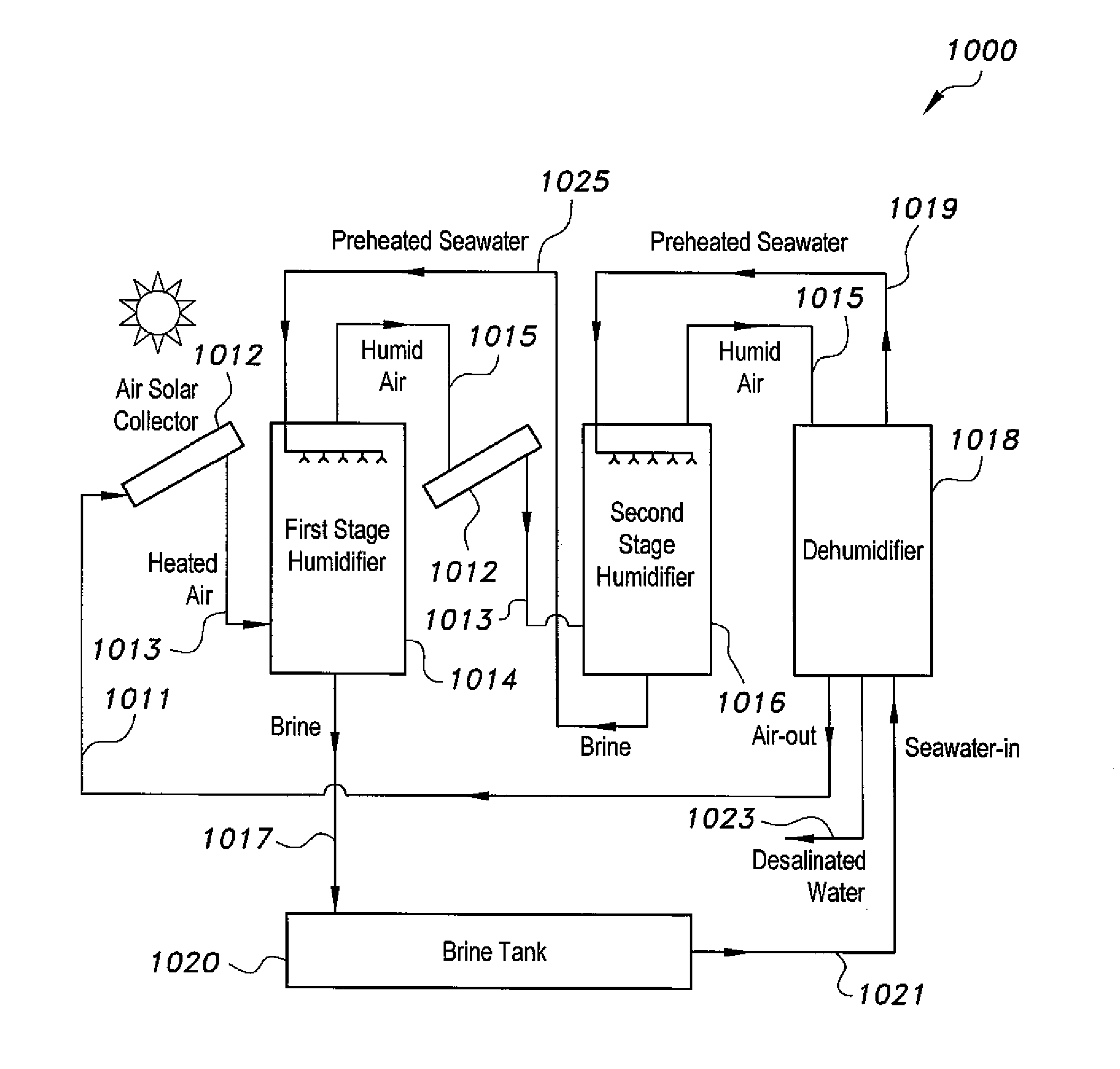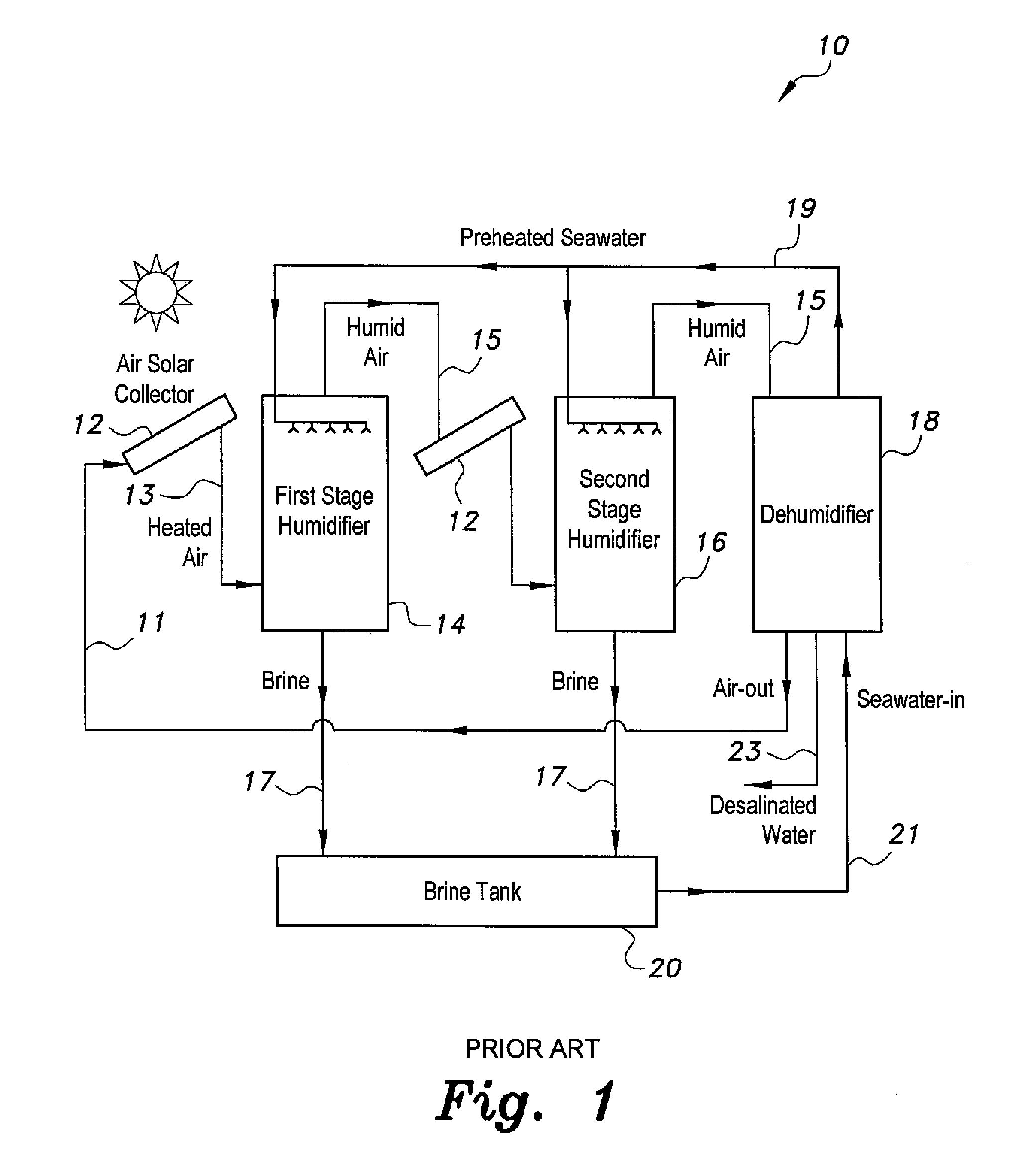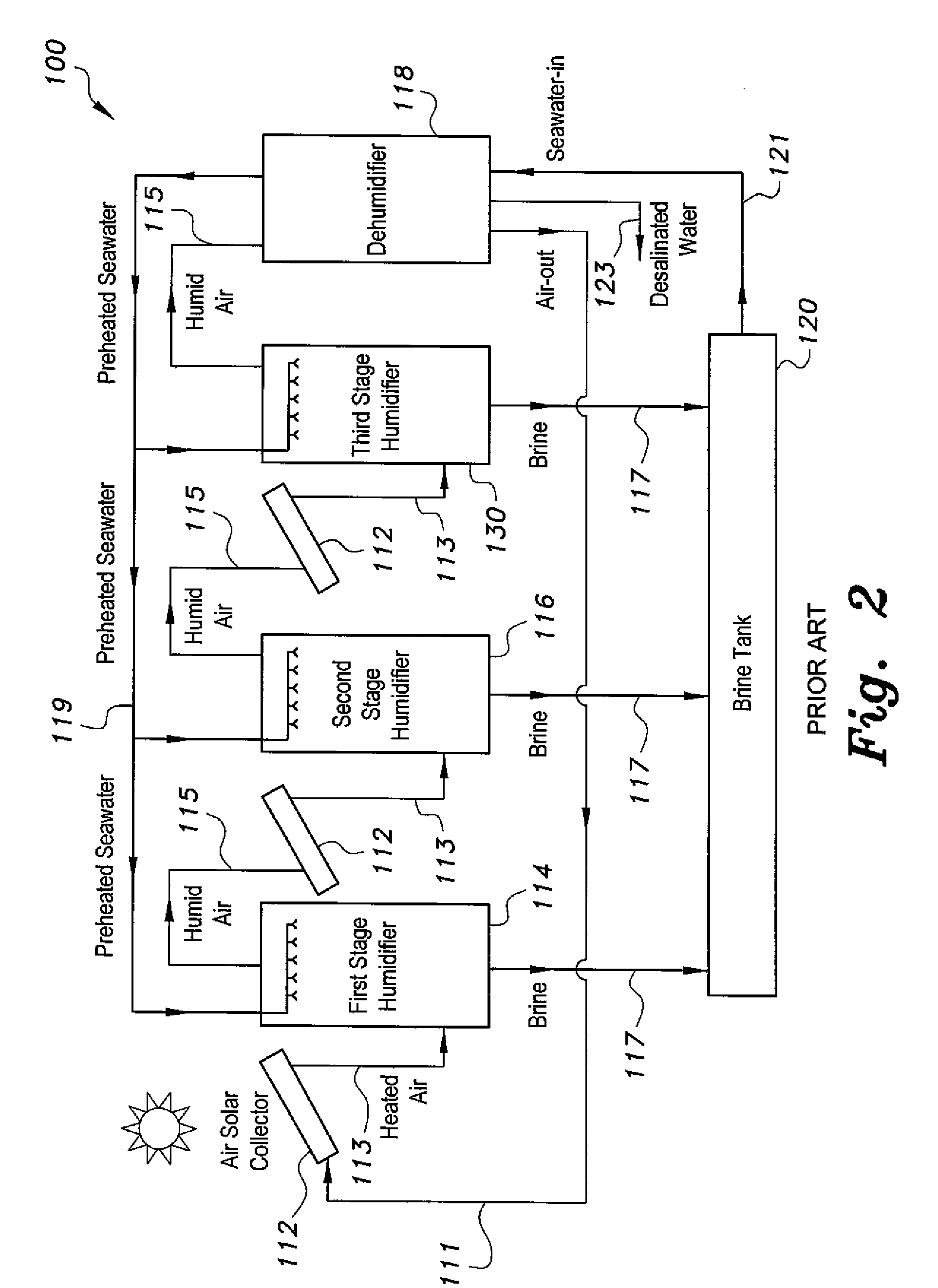Solar-powered humidification-dehumidification desalination system
a desalination system and solar energy technology, applied in water/sewage treatment, distillation separation, water/sludge/sewage treatment, etc., can solve the problems of limited amount of desalinated water, difficult access to sweet water pipelines, and considerable thermal inefficiency, and achieve less energy consumption and more efficient evaporation
- Summary
- Abstract
- Description
- Claims
- Application Information
AI Technical Summary
Benefits of technology
Problems solved by technology
Method used
Image
Examples
Embodiment Construction
[0026]The solar-powered humidification-dehumidification desalination system, hereinafter referred to as the multi-stage air-heated humidification-dehumidification MSAHHDH desalination system, utilizes latent or residual heat energy in the brine to increase thermal efficiency and desalinated water production in the desalination process. As shown in FIG. 4, in a first embodiment, the MSAHHDH desalination system 1000 is a two-stage process that includes a plurality of solar collectors 1012, each being operatively connected to a corresponding first-stage humidifier 1014 and a second-stage humidifier 1016. The solar collector 1012 adjacent the first-stage humidifier 1014 supplies heated, relatively dry air 1013 for the humidification process, while the solar collector 1012 adjacent the second-stage humidifier 1016 reheats the humid air from the first-stage humidifier 1014. The heated air 1013 crosses streams with preheated brackish water or seawater 1019, 1025 sprayed inside the humidifi...
PUM
| Property | Measurement | Unit |
|---|---|---|
| energy-efficient | aaaaa | aaaaa |
| energy- | aaaaa | aaaaa |
| solar energy | aaaaa | aaaaa |
Abstract
Description
Claims
Application Information
 Login to View More
Login to View More - R&D
- Intellectual Property
- Life Sciences
- Materials
- Tech Scout
- Unparalleled Data Quality
- Higher Quality Content
- 60% Fewer Hallucinations
Browse by: Latest US Patents, China's latest patents, Technical Efficacy Thesaurus, Application Domain, Technology Topic, Popular Technical Reports.
© 2025 PatSnap. All rights reserved.Legal|Privacy policy|Modern Slavery Act Transparency Statement|Sitemap|About US| Contact US: help@patsnap.com



